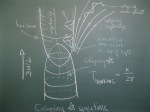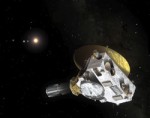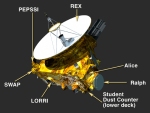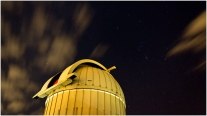Today’s announcement of gravitational waves being detected coming from the original Big Bang (well not really, but we’ll get into that below) which was measured by the BICEP2 telescope at the South Pole has got a ton of attention on the internet. (So much so the web servers broke down under the load!). This is big news because it confirms theories about the expansion of the universe since the Big Bang, and opens up the doors to some new discoveries. There’s even a really quite wonderful YouTube movie of Dr Andrei Linde, one of the co-developers of the so-called ‘Inflationary Cosmology’ theory, being told about the results.
The fact is though, this isn’t an easy topic to explain. The discovery of the Higgs Boson particle came with its own simple explanations (“Oh…it’s the thing that gives things mass..”). However, for the BICEP2 results, it’s much harder to explain the implications. Most people can get that the team of BICEP2 scientists are telling us something important about what happened just after the Big Bang – which happened 13.8 billions of years ago – but what exactly? And why should we care?
So here’s my top ten list of facts and questions about the results 1 that may help put things in perspective!
10. What are gravitational waves and why do they matter?
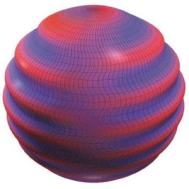 On an everyday basis we think of space and time as just there. But many people know that Dr Albert Einstein showed space and time are actually combined into one four dimensional object known as space-time. With his General Theory of Relativity, Einstein also showed that space-time can have very specific ripples pass through it – these ripples are called ‘gravitational waves‘. Gravitational waves are very, very weak and hard to detect. Indeed decades of direct detection experiments that measure distortions of space-time have failed to come up with a true measurement. Yet those measurements are indicative of incredibly powerful events, like merging black holes or, as in today’s announcement, the phenomenal energies of the Universe just after the Big Bang.
On an everyday basis we think of space and time as just there. But many people know that Dr Albert Einstein showed space and time are actually combined into one four dimensional object known as space-time. With his General Theory of Relativity, Einstein also showed that space-time can have very specific ripples pass through it – these ripples are called ‘gravitational waves‘. Gravitational waves are very, very weak and hard to detect. Indeed decades of direct detection experiments that measure distortions of space-time have failed to come up with a true measurement. Yet those measurements are indicative of incredibly powerful events, like merging black holes or, as in today’s announcement, the phenomenal energies of the Universe just after the Big Bang.
9. What does BICEP2 stand for and how has the BICEP2 experiment detected gravitational waves?
First the easy one: Background Imaging of Cosmic Extragalactic Polarization. OK, so there’s a bunch of things in the name alone, and let’s start there. The polarization aspect is really the key one. BICEP2 has been measuring the Cosmic Microwave Background, relic radiation left over from 380,000 years after the Big Bang (which is still about 13.4 billion years ago!) We’ve actually made a lot of measurements of this radiation before, but the key part of BICEP2 is that it has measured the polarization of radiation (light waves have a specific direction for their wave form, that direction measures the polarization, see here) to exquisite precision. Here’s a map from today’s press release:
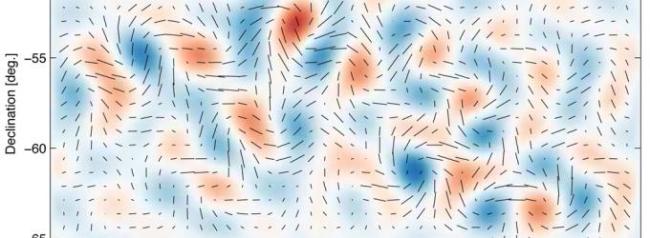
Great! Erm, why is this polarization interesting? Well because the polarization encodes within it the signal of gravitational waves. The distortions of space produced by gravitational waves can induce a distortion that is kind of spiral-like, and you can see evidence of those patterns in the above image. It’s this signal that BICEP2 has been able to find… and it wasn’t an easy process due to other types of distortions occurring during the massive changes after the Big Bang (in fact I wasn’t expecting to see a detection like this for while!).
8. Haven’t we found evidence of gravitational waves before?
Indirectly, yes. In fact the 1993 Nobel prize in Physics was awarded to Hulse and Taylor for the study of a binary pulsar whose orbital decay (i.e. loss of energy) is beautifully explained by the launching of gravitational waves that take energy away from the system.
You might be thinking that today’s measurement is also indirect, in the sense we’re measuring the distortions on the polarization of photons at one particular point in time — namely when the light that forms the cosmic microwave background was emitted (its energy is reduced as the Universe expands making the wavelength change from around visible light to microwaves). Perhaps this is somewhat indirect, but it isn’t all that different from measuring the changes in space time that direct-measurement experiments try to find, in some experiments, such as LIGO lasers are used to measure space-time distances and gravitational changes in the universe 2.
7. What is the inflationary theory and why do we need it?
OK… This is a tough one to do in a short paragraph, but basically we don’t understand why the Universe appears so uniform over such large scales. If we wind the clock back with our conventional models for the evolution of the Universe, then we find there are regions that couldn’t possibly have shared information due to the limit on the speed of light – so why would they look similar? You could argue that everything had started similarly at the very beginning after the Big Bang somehow (!?). Scientifically, that idea isn’t very popular because it lacks a true explanation.
The ‘Inflationary Cosmology’ theoretical model solves this problem quite neatly by having a period of expansion that was much faster (that’s waaaaay faster) than standard cosmological models predict. That way, regions that were thought not to be in contact actually were at one point… Rapid inflation also helps a explain a few other things too, such as why it looks like the energy densities of the Universe add up to an almost perfectly balanced number (the so-called critical density). Many people think that without the ‘Inflationary Cosmology’ theory, we have a hard time explaining why the Universe is still in existence!
6. BICEP2 (grey dish on top of blue building) doesn’t look much like a telescope, it looks like a satellite dish why’s that?
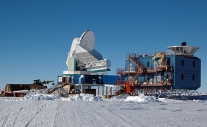 You’ve pretty much nailed it. The BICEP facility is detecting similar wavelengths to some satellite or communication dishes – microwaves. So it isn’t going to look like a nice tube similar to an optical telescope. (Actually the big white dish in the photo is the South Pole Telescope – a competing facility!)
You’ve pretty much nailed it. The BICEP facility is detecting similar wavelengths to some satellite or communication dishes – microwaves. So it isn’t going to look like a nice tube similar to an optical telescope. (Actually the big white dish in the photo is the South Pole Telescope – a competing facility!)
5. Why did they put it at the South Pole?
Aside from being miles and miles away from signals that would interfere with the telescope, the South Pole is also incredibly dry. That’s really important because the microwaves carrying all the information from just after the Big Bang have to travel billions of light years across our observable Universe to reach us. But then that radiation still has to get through the water vapour in our atmosphere. Why is that a problem? Well because water vapour is a really strong absorber of certain wavelengths of microwaves (that’s how we heat up things in a microwave oven for example!). So the less water vapour above your microwave telescope, the better 3.
4. Could this possibly be a false detection?
That seems pretty unlikely, but isn’t impossible. The team announcing the results have tried to be as careful as possible, although there is always concern about false signals and misinterpretations of data. However, it seems very unlikely that the signal is coming from dust in interstellar space, or from a very specific type of electromagnetic radiation called synchroton radiation, which also produces the particular patterns measured. A few blogs are also talking about the fact that perhaps the statistical tests look almost “too good” and that they may possibly be “systematic errors”, namely errors that basically enforce their results rather than being merely random. This is another tough issue which will be subject to much scrutiny over the next few weeks. That’s how science works! You can be sure these results will rigourously investigated.
3. Are we going to need another experiment to confirm this one?
Well, perhaps not to confirm this particular set of data — but yes, we are going to need better measurements, preferably on larger and smaller scales on the sky. That’s because if we really do want to start pinning down the physics precisely, then absolutely, more measurements are needed! (see below!) But the good news is that upcoming data from the European Union’s Planck satellite measuring microwave radiation polarization over the entire sky, and possibly BICEPs competitor the South Pole Telescope, which is another microwave telescope, this time run by University of Chicago, may well add to the evidence. Actually a few people are saying they won’t trust today’s results until they see those from the Planck satellite.
2. Some people are talking about “quantum gravity” as well, why’s that?
 The quantum theory of gravity is considered by many as the Holy Grail of theoretical physics (Albert Einstein was deeply interested in it in his later years). The quantum theory of gravity seeks to reconcile gravity, one of the four fundamental forces in our current universe with quantum mechanics. After decades of study, we have candidate theories (e.g. string theory) but we do not yet have complete working description of this mindbogglingly complex physics. It’s important because the quantum theory of gravity describes the highest energies we can think about, and that means it is the the theory that is most relevant to the Big Bang.
The quantum theory of gravity is considered by many as the Holy Grail of theoretical physics (Albert Einstein was deeply interested in it in his later years). The quantum theory of gravity seeks to reconcile gravity, one of the four fundamental forces in our current universe with quantum mechanics. After decades of study, we have candidate theories (e.g. string theory) but we do not yet have complete working description of this mindbogglingly complex physics. It’s important because the quantum theory of gravity describes the highest energies we can think about, and that means it is the the theory that is most relevant to the Big Bang.
A number of theorists have pointed out that the gravitational waves that have been detected today are most probably the direct result of quantum gravity (see here for a really very technical discussion!) That makes today’s announcement even more profound. But that said, there is a slight fly in the ointment, namely there may be other methods of producing primordial gravitational waves.
But regardless, many people are incredibly excited about the possibility that with this signal, or perhaps better measurements, we can start putting real bounds on theories of quantum gravity. At this early stage though, a large number of important details make it difficult to predict the precise impact. But I think it’s important to remember this is a field with close to zero experimental information, so any useful measurements are going to be of enormous value.
1. Why should I care and what is this “new physics” that people are talking about?
Although particle accelerators can probe high energies for individual sub-atomic particles, they are still 12 orders of magnitude away from investigating the fundamental energies present during inflation after the Big Bang (as suggested by today’s results). And you really don’t want a Big Bang happening in your backyard anyway – there’s too much energy! The BICEP2 results arguably give us the first deep insight into the state of the Universe when it had an energy under 1/100th of that associated with the highest energy theorists spend time thinking about, which is the “Planck energy“.
Why should you care? Firstly, it is incredible that humanity has pretty much figured out the nature of the Universe all the way back to just before the Creation Event. We’ve been at this game since the late 1960’s (arguably) and we inhabit a fairly innocuous planet, around a comparatively unimportant star, in a seemingly unimportant galaxy! Those facts alone are enough to make your head spin… We only figured out that our planet revolved around the Sun 450 years ago!
Secondly, almost every time we learn something profound about the nature of the cosmos, whether it’s time and space, or the particles within it, our culture has been notably impacted. From relativity to neutrinos, new ideas soak back into our common lexicon and impact how we think about the Universe and the world we inhabit. As I mentioned above we may be making our first baby-steps toward figuring out problems that Einstein made little to no impact on.
Thirdly, we’re never going to be able probe this new physics in a laboratory – the energies are just too high! So the Universe is the only lab we have for measuring these physical theories!
Lastly, if you watch the Big Bang Theory tv program, you can be sure that they’ll have an episode on this result soon, and you want to be ahead of the game for that don’t you? 🙂
Congrats to the BICEP2 group – hopefully this result will stand-up to scrutiny. If it does, it’s a really, really big deal!
—
Footnotes:
1.A note: this post is not for specialists. For those who’d like delve more into this amazing discovery, there have been some spectacular posts by others at that technical level (e.g. here, here and here and plenty of others).
2. Update – there’s actually a big debate over this in professional circles, but really it’s a good detection method, IMHO.
3. Of course the absolutely best thing to do is just to simply build a telescope in space like the Planck satellite. But building and operating such a space telescope is incredibly expensive…
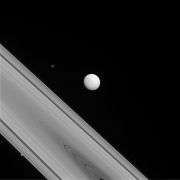 Given Saturn’s incredible beauty it should be no surprise that the Cassini mission has been a huge hit with the public. Image after image has revealed new discoveries, from icy plumes coming from Enceladus to the incredible polar hexagon and plenty more (heck I didn’t even mention Huygens and images from Titan!) But all good things must come to an end. And so NASA engineers have begun Cassini on a series of maneuvers that will plunge over the poles of Saturn, past the edges of the rings and eventually into the cloud tops of the planet in September 2017. There’s still a bit more science to come, but the final waltz has started!
Given Saturn’s incredible beauty it should be no surprise that the Cassini mission has been a huge hit with the public. Image after image has revealed new discoveries, from icy plumes coming from Enceladus to the incredible polar hexagon and plenty more (heck I didn’t even mention Huygens and images from Titan!) But all good things must come to an end. And so NASA engineers have begun Cassini on a series of maneuvers that will plunge over the poles of Saturn, past the edges of the rings and eventually into the cloud tops of the planet in September 2017. There’s still a bit more science to come, but the final waltz has started! OK, I’m cheating again! But everyone must have noticed that Blue Origin is quietly sneaking up on SpaceX in terms of achieving multiple launches and landing of the same vehicle. Their suborbital flights are of course easier than the launches SpaceX is doing, but they have an impressive flight record. Competition is good, hopefully they can make rapid progress on their New Glenn lift vehicle. SpaceX had a mixed year, making its first barge landing but also suffering its first launch pad accident during fueling. Delays also pushed back the first test of Falcon Heavy. Perhaps not so quietly, Virgin Galactic returned to testing with a new SpaceShipTwo, following the crash of VSS Enterprise in October 2014. Virgin won’t comment on an expected date for first passengers at this time. A wise move.
OK, I’m cheating again! But everyone must have noticed that Blue Origin is quietly sneaking up on SpaceX in terms of achieving multiple launches and landing of the same vehicle. Their suborbital flights are of course easier than the launches SpaceX is doing, but they have an impressive flight record. Competition is good, hopefully they can make rapid progress on their New Glenn lift vehicle. SpaceX had a mixed year, making its first barge landing but also suffering its first launch pad accident during fueling. Delays also pushed back the first test of Falcon Heavy. Perhaps not so quietly, Virgin Galactic returned to testing with a new SpaceShipTwo, following the crash of VSS Enterprise in October 2014. Virgin won’t comment on an expected date for first passengers at this time. A wise move. Good news and bad with this one! The good is obvious: Juno reached Jupiter after one of the most incredibly complicated flight plans NASA has ever flown. Borrowing energy from the Earth’s orbit, Juno was flung like a slingshot stone towards Jupiter in 2013. At the other end of its journey it had to slow down and take up a highly elliptical orbit around Jupiter’s polar region. The plan was to first get it into a large 53-day orbit, and then a smaller 14 day orbit called the “science orbit.” The first one was achieved but alas not the second. A faulty valve is preventing NASA from making orbital corrections. Scientists working on the project have reported they’ll still be able to do the groundbreaking science that was planned, focusing primarily on the structure of Jupiter and how it formed, but they’ll just have fewer orbits of data. Being farther out most of the time Juno will be less impacted by Jupiter’s powerful radiation and so the mission can be extended to allow more orbits if necessary. Remember, the end of the mission will see Juno plunged into Jupiter!
Good news and bad with this one! The good is obvious: Juno reached Jupiter after one of the most incredibly complicated flight plans NASA has ever flown. Borrowing energy from the Earth’s orbit, Juno was flung like a slingshot stone towards Jupiter in 2013. At the other end of its journey it had to slow down and take up a highly elliptical orbit around Jupiter’s polar region. The plan was to first get it into a large 53-day orbit, and then a smaller 14 day orbit called the “science orbit.” The first one was achieved but alas not the second. A faulty valve is preventing NASA from making orbital corrections. Scientists working on the project have reported they’ll still be able to do the groundbreaking science that was planned, focusing primarily on the structure of Jupiter and how it formed, but they’ll just have fewer orbits of data. Being farther out most of the time Juno will be less impacted by Jupiter’s powerful radiation and so the mission can be extended to allow more orbits if necessary. Remember, the end of the mission will see Juno plunged into Jupiter! Finding a planet around our nearest stellar neighbour is a really big deal. Being so close, it offers the possibility of studying with the James Webb Space Telescope and the next generation of 30m class telescopes that will be completed in the 2020s. There was initially a lot of speculation about the possibility of life, however the likelihood isn’t good. Proxima Centauri is a flare star, so it regularly releases burst of high energy particles which could be expected to hit the planet. With the planet so close to the star (it orbits at only 1/20th of the Earth-Sun distance) it would be amazing if it managed to hold on to an atmosphere. I can’t wait for JWST to give us some clues on that in just a year or two!
Finding a planet around our nearest stellar neighbour is a really big deal. Being so close, it offers the possibility of studying with the James Webb Space Telescope and the next generation of 30m class telescopes that will be completed in the 2020s. There was initially a lot of speculation about the possibility of life, however the likelihood isn’t good. Proxima Centauri is a flare star, so it regularly releases burst of high energy particles which could be expected to hit the planet. With the planet so close to the star (it orbits at only 1/20th of the Earth-Sun distance) it would be amazing if it managed to hold on to an atmosphere. I can’t wait for JWST to give us some clues on that in just a year or two! Just imagine it – two black holes, one 29 times the mass of the Sun, another 36 times the mass of the Sun inspiralling together at almost half the speed of light. They’d be just 100s km across each, and in the collision three times the mass of the Sun would be released in gravitational wave energy! In that split second the rate of gravitational energy release is greater than the light energy from all the stars in the observable universe! Announced in February of 2016, the LIGO gravitational wave detector picked up the signal from this truly mindboggling event. That marked the end of a 50 year quest to confirm the existence of gravitational waves, first predicted by Einstein a century ago. The detection also opens up an entirely new branch of astronomy: gravitational wave astronomy. Who knows what amazing new discoveries are around the corner?
Just imagine it – two black holes, one 29 times the mass of the Sun, another 36 times the mass of the Sun inspiralling together at almost half the speed of light. They’d be just 100s km across each, and in the collision three times the mass of the Sun would be released in gravitational wave energy! In that split second the rate of gravitational energy release is greater than the light energy from all the stars in the observable universe! Announced in February of 2016, the LIGO gravitational wave detector picked up the signal from this truly mindboggling event. That marked the end of a 50 year quest to confirm the existence of gravitational waves, first predicted by Einstein a century ago. The detection also opens up an entirely new branch of astronomy: gravitational wave astronomy. Who knows what amazing new discoveries are around the corner?
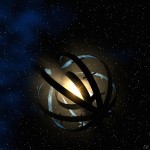 OK, OK, maybe this one shouldn’t be on the list, but it’s fun for a number of reasons. Firstly, this story is the tip of a scientific iceberg. We’re reached the point that we’re monitoring so many stars with the
OK, OK, maybe this one shouldn’t be on the list, but it’s fun for a number of reasons. Firstly, this story is the tip of a scientific iceberg. We’re reached the point that we’re monitoring so many stars with the  Bit of a cheat, since
Bit of a cheat, since 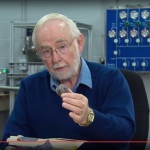 Is it ironic that an experiment 2km down in a mine should be the second top space story? Not really! The
Is it ironic that an experiment 2km down in a mine should be the second top space story? Not really! The  Everyone’s favourite underdog stole the headlines for 2015. The
Everyone’s favourite underdog stole the headlines for 2015. The 

